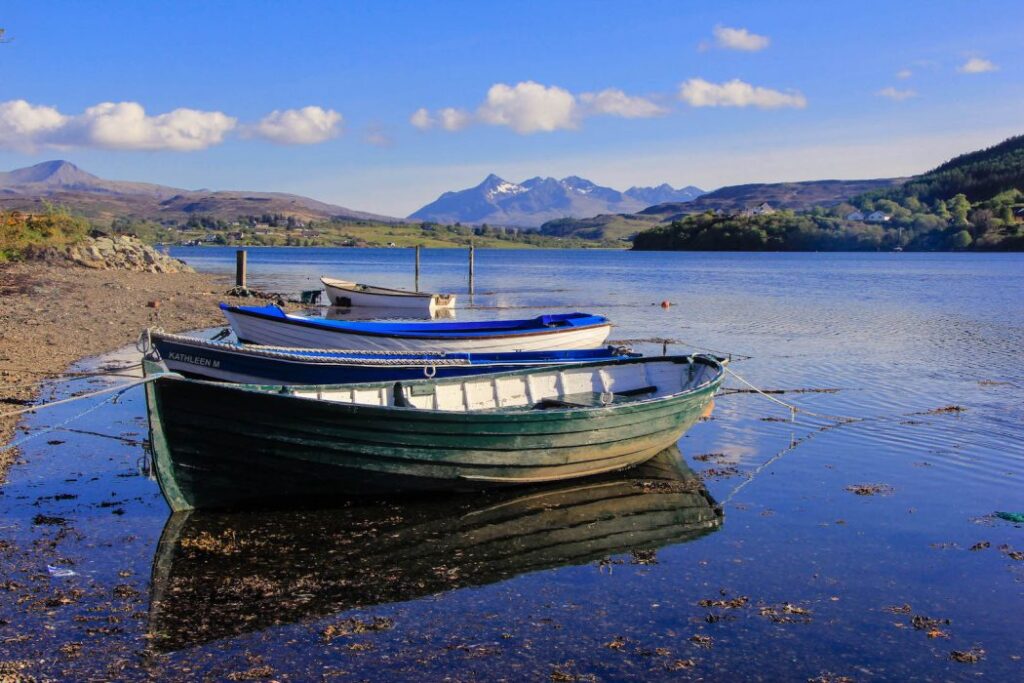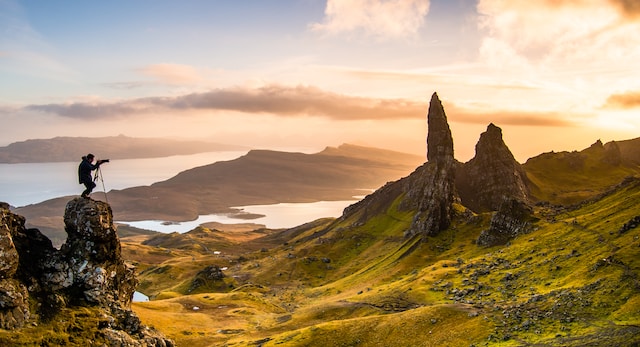Scotland’s islands provide something for every traveller, be it solo exploration through wilderness areas or taking in history lessons. Here are the top Scottish Islands you should visit for your next journey.
Lewis offers plenty of beautiful landmarks, from Callanish Standing Stones and historic brochs to blackhouse villages, historic brochs, and peat fields—not forgetting wildlife and an active island community!

Isle of Jura
With its rolling seas and restless herds of red deer, Jura provides an intriguing glimpse into Scotland’s wilder past. As one of the Inner Hebrides largest islands, Jura hosts only a handful of hardy souls scattered among its scattered villages. However, its captivating landscapes, rich history, and abundance of wildlife such as golden eagles and seals make it an excellent starting point to discover Scotland’s western coast.
Attractions to this area include its rugged coastline, sandy and shingle beaches, mossy bogs, and heather-flanked woodlands, which attract walkers and wildlife enthusiasts. Otters, buzzards, hen harriers, and other bird species regularly visit.
Craighouse is the main village on Jura and hosts its only shop and hotel (with only two dining options), as well as its whisky distillery. Nestled beneath Jura’s three distinctively mounded mountains is where Craighouse can be found.
History enthusiasts will delight in Machrie Moor’s ancient standing stones that tell of another age; Brodick Castle stands as an impressive testament to centuries of Scottish culture; and Talisker Distillery offers tours that include free samples of drams! For an extra dose of traditional music and dance, Saturday night fun at an island hall ceilidh offers something different; locals as well as visitors of all ages can join together and dance the night away!
Isle of Coll
The Isle of Coll is an idyllic island that may seem remote at first glance, yet visitors find themselves drawn here for its natural attractions, from white-sand beaches and golden sunsets to corncrakes calling in their distinctive manner and seals basking sharks swimming nearby. Stargazers and island hoppers love it here!
Coll is home to generations of farmers and crofters who have made this island virtually self-sufficient, boasting shops and cafes offering local products as well as the award-winning Jura Distillery for visitors to sample local liquor.
On your visit to Killunaig Island, enjoy strolls along secluded beaches and coves or visit the remnants of Killunaig Church—it’s all that remains of a mediaeval parish church dedicated to Saint Findoca and first recorded in 1433!
Coll’s sandy beaches are fringed with flower-carpeted machair and rolling grassland. Additionally, Coll is known to be home to rare corncrakes; look out for them amongst the dunes at Crossapol Beach!
Coll Island provides the ideal base for exploring its nearby islands of Iona and Staffa, home of Fingal’s Cave, from Oban. Additionally, visit Mull’s historic Iona for an added tour or head straight for Staffa, where Fingal’s Cave inspired Mendelssohn’s Hebrides Overture composition.
Isle of Lunga
Isle of Lunga may not top many people’s bucket lists, but this small island west of Mull in the Inner Hebrides is an unspoilt paradise that boasts unspoiled landscapes inhabited by puffins and guillemots, making it a Site of Special Scientific Interest protected by overnight stays being prohibited and visitors restricted to two-hour visits so as not to disrupt wildlife habitat.
St. Kilda, the Hebrides’ most remote island, requires some effort to access, but once there, it can be an amazing experience. Once home to approximately thirty hardy inhabitants who relied on fishing, raising sheep, and gathering bird eggs for survival, today it hosts more than one million seabirds as their home!
Arran Island in the Firth of Clyde lies three hours’ ferry ride away from Glasgow and resembles the miniature Highlands with its rolling lowlands and rugged crags covered by heather-covered hills. Bring hiking boots if you plan on taking on Arran’s 65-mile Coastal Way; for dinner, visit Mara Fish Bar & Deli for excellent seafood dishes!
Isle of Staffa
Staffa Island stands out amongst the Scottish islands as an exceptional getaway, known for its exceptional wildlife and stunning landscapes. Its peaceful atmosphere and small population make it the ideal place for relaxation; forests filled with red deer roam freely, while coastal waters serve as homes for seals and dolphins.
Staffa Island got its name from Viking construction techniques that used vertical wooden staves. Additionally, it is said to resemble a hexagonal basalt rock formation in Northern Ireland known as Giant’s Causeway, built by Fionn Mac Cumhaill. Now both structures appear connected via an invisible bridge across the seas.
Staffa Island is well known for its puffin population, which can be found flitting about its cliffs and grassy areas throughout spring and summer. Puffins are one of Scotland’s beloved national treasures and it is always exciting to witness them in their natural habitat, as humans approach them quite closely without fear of being disturbed too much by them or approached for physical contact or selfies! However, Staffa should remain undisturbed so the puffins may enjoy themselves undisturbed; you should avoid approaching for physical contact or selfies if possible!
Staffa is an island paradise packed with geology, history, archaeology, music, and mythology that makes an amazing destination to explore during a Scotland Slowly expedition.



